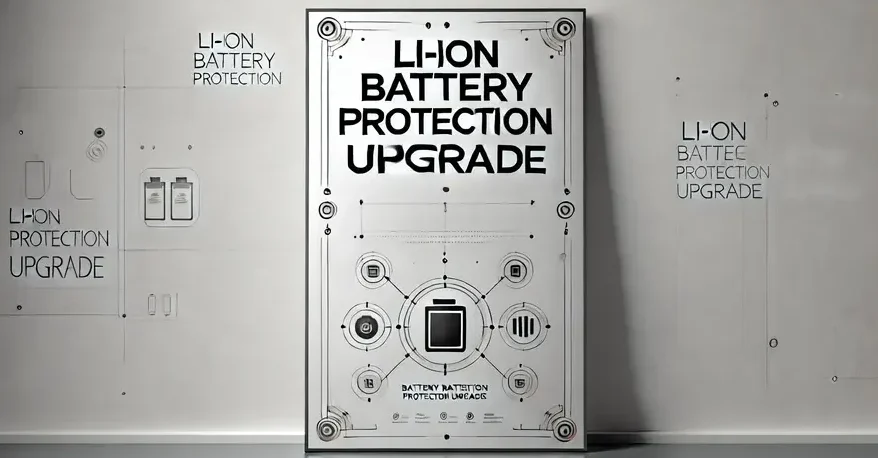Cheap Li-ion battery protection and charging boards like TP4056 (AliExpress affiliate link) and other which you can find on AliExpress, Amazon, eBay, etc. are widely used in various DIY electronics, offer essential safeguards for your batteries. However, the majority of these boards are equipped with the DW01 protection IC, which has a too low discharge protection threshold, potentially shortening your battery’s lifespan. In this guide, we’ll show you how to upgrade these boards by replacing the DW01 IC with the FS312 IC, which provides a higher voltage cutoff for better battery health.
The Issue with DW01 in Battery Protection Boards

The DW01 IC is a commonly used component in low-cost battery protection boards. While it offers basic protection for overcharge and discharge, its discharge cutoff voltage is typically around 2.4V–2.5V. This is problematic because discharging Li-ion batteries to such a low voltage can significantly reduce their overall lifespan.
- Discharge Cutoff Voltage (DW01): 2.4V–2.5V
- Overcharge Protection Voltage: 4.25V
Although the DW01 provides basic overcharge protection, its low discharge threshold can accelerate battery wear. Ideally, a Li-ion battery should not discharge below 2.8V–3.0V for optimal longevity.
Introducing the FS312 IC: A Better Alternative for Battery Life

The FS312 IC serves as a direct replacement for the DW01, but with improved voltage cutoff specifications that better suit Li-ion battery longevity. Its discharge protection threshold is around 2.9V, preventing excessive depletion of the battery, which leads to a longer overall life span.
- Discharge Cutoff Voltage (FS312): 2.9V
- Overcharge Protection Voltage: 4.25V
This higher cutoff ensures that the battery never drains to dangerous levels, which could lead to permanent capacity loss over time. Replacing the DW01 with FS312 is a simple, effective upgrade for those who want to extend their battery’s life. You can easily find this IC on AliExpress for about $2 or so for a pack of 10 (AliExpress affiliate link).
How to Replace the DW01 with FS312
Disclaimer:
The author assumes no responsibility for any damage to equipment, batteries, or personal injury that may result from attempting the procedures described. Modifying electronic components, especially with Li-ion batteries, involves inherent risks. Please ensure you have the necessary knowledge and skills before attempting this project, and always prioritize safety precautions. Use this guide at your own risk.

What You Need:
- FS312 IC
- Soldering iron with a blower or a hot air rework station.
- Tweezers for precision work
Steps:
- Preparing the Board: Carefully locate the DW01 IC on your charging module. Start by heating up your soldering iron blower. I set temperature to 290C, but it is up to you.
- Removing the DW01 IC: Use the blower to heat the area around the DW01 chip to soften the solder. Once the solder is loose, gently lift the DW01 using tweezers. Be careful not to damage the surrounding components.
- Placing the FS312 IC: Align the FS312 IC on the board in the same position as the old DW01. To hold the IC in place, you can use a cocktail stick with a small weight with it, as shown in the picture. Apply heat with the blower until solder is loose. Ensure all contacts are properly soldered and there are no shorts between them.
- Testing the Upgrade: After replacing the IC, connect your power supply and emulate a battery to check the new discharge cutoff. The upgraded board should now cut off at around 2.9V.
By upgrading to the FS312, your Li-ion batteries will maintain better long-term health, cutting off at safer voltage levels now.
Conclusion
Replacing the DW01 IC with the FS312 IC is a simple but effective way to improve the performance of cheap Li-ion battery protection boards. This upgrade will help prevent over-discharge and prolong the life of your batteries. With basic soldering skills and the right tools, you can ensure your batteries last much longer.
Stay Updated
If you enjoyed this guide, follow us on social media (links in the website footer) to stay updated on similar DIY projects in the future.



Leave a Reply